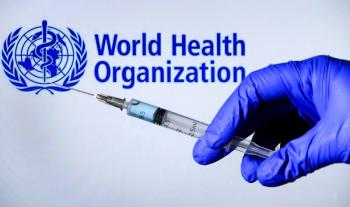
News|Articles|March 21, 2022
COVID-19 Updates: US Vaccinations, Booster Doses, & Global Data as of March 21, 2022
Author(s)Sydney Jennings
Data from the CDC on boosters and US vaccination rates and from the Johns Hopkins COVID-19 interactive map on cases and deaths in the US and worldwide.
Advertisement
How many fully vaccinated Americans have received a booster dose?
According to the Centers for Disease Control and Prevention (CDC) as of today, March 21, 2022, at 4:00 PM, EDT:
44.5% of fully vaccinated persons in the US have received a booster dose of COVID-19 vaccine.
What percentage of people across age groups in the US have been fully vaccinated?
According to the CDC as of today, March 21, 2022, at 4:00 PM, EDT:
• 65.4% of total US population
• 69.5% of US population aged ≥5 years
• 73.8% of US population aged ≥12 years
• 75.3% of US population aged ≥18 years
• 88.9% of US population aged ≥65 years
The 5 states/territories with the highest percentage of population fully vaccinated are:
1. Puerto Rico: 82%
2. Rhode Island: 81.3%
3. Vermont: 80.5%
4. Maine: 78.7%
5. Connecticut: 78.2%
2. Rhode Island: 81.3%
3. Vermont: 80.5%
4. Maine: 78.7%
5. Connecticut: 78.2%
How many cases of COVID-19 have been confirmed in the US?
According to the Johns Hopkins COVID-19 interactive map , as of today, March 21, 2022 at 3:20 PM, EDT, there have been:
• 79 760 553 confirmed cases and
• 971 718 deaths
• 971 718 deaths
The 5 states with the highest total confirmed cases are:
1. California: 9 072 935
2. Texas: 6 692 843
3. Florida: 5 868 263
4. New York: 4 964 102
5. Illinois: 3 055 636
2. Texas: 6 692 843
3. Florida: 5 868 263
4. New York: 4 964 102
5. Illinois: 3 055 636
Deaths: California has the highest number of deaths due to COVID-19 with 88 176 reported fatalities, followed by Texas with 86 692 and Florida with 72 704.
How many cases of COVID-19 have been confirmed globally?
Globally, there have been 471 584 300 confirmed cases, 6 091 794 deaths, and 10 806 014 608 vaccine doses administered.
Newsletter
Enhance your clinical practice with the Patient Care newsletter, offering the latest evidence-based guidelines, diagnostic insights, and treatment strategies for primary care physicians.
Advertisement
Latest CME
Advertisement
Advertisement
Trending on Patient Care Online
1
FDA Clears First At-Home Brain-Stimulation Device for Major Depression
2
Retatrutide Achieves Up to 28.7% Weight Loss and Marked Knee Pain Reduction in Phase 3 TRIUMPH-4 Trial
3
Two Global Phase 3 Trials Confirm Efficacy of Rocatinlimab for People With Moderate-to-Severe Atopic Dermatitis
4
ADA Publishes 2026 Standards of Care With Updates to Sections on Technology, Obesity, Cardiometabolic Disease Management
5





















































































































































































































































































